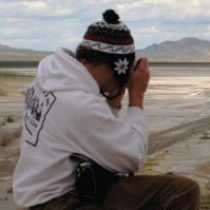Landscape Architecture for Landscape Architects › Forums › RESEARCH › Disc Golf Course Design Thesis
- This topic has 1 reply, 5 voices, and was last updated 11 years, 9 months ago by
 Calico.
Calico.
-
AuthorPosts
-
December 16, 2013 at 11:14 am #153503
 curlyParticipant
curlyParticipantLandscape Architecture’s first disc golf thesis (course design and lifestyle sports):
http://issuu.com/subsurface_2012-13/docs/plansky_disc_golf_thesis_r3
abstract
Disc golf emerged as one of several alternative lifestyle sports from the countercultural
social movement of the 1960s and its popularity has steadily grown while other
postmodern recreation forms have faded or plateaued (Wheaton 2004). As an accessible,
malleable form of outdoor recreation Its appeal can be explained by the sense of place
elicited from direct engagement with the landscape and community derived from a culture
of play. This thesis identi!es the landscape and cultural characteristics of disc golf that make
it attractive by collecting and analyzing qualitative data directly from its participants in the
Los Angeles region. Semi-structured interviews were conducted at four popular disc golf
courses representing four distinct landscape typologies in order to discover motivations to
play and user preferences related to landscape characteristics. Demographic results
identi!ed patterns of user responses. The results of content analysis of the transcribed
interviews revealed an overall reluctance to travel for disc golf, but a desire for landscape
variety. Interview respondents also expressed an overall willingness and enthusiasm to play
courses developed on underutilized post-industrial sites. Community and camaraderie at
each site was shown to be uniquely shaped by rule-creation through play forms (Callois
1961) by either leveling the playing !eld for newer players, or creating complexity/challenge
for more experienced players. As the economy weakens, leisure demand for open space
increases (Trust for Public Land 2011) and landscape architecture in academia has the
opportunity to research how course growth can activate underutilized urban environments.
With new understanding about subculture and course typologies, designers can apply
knowledge of disc golf as a unique form of recreation to steer its evolution as a component
of multi-functional urban environments. Guidelines and recommendations are given.
December 16, 2013 at 5:36 pm #153510 CalicoParticipant
CalicoParticipantFYI, the link does not go to the thesis, at least for me. Cutting and pasting the URL into the address bar did the trick.
Interesting work from what I skimmed; see if you can pare it waaaaayyyy down (i.e., get rid of the fluff your committee had you include) and get published outside of academia. I can’t believe you transcribed each interview… although the reading is entertaining, particularly related to the gambling aspects of the game.
December 17, 2013 at 1:38 am #153509 curlyParticipant
curlyParticipantI’m glad you took the extra steps with your digits to view my thesis. I have been considering condensing my findings down to about 5 pages to first publish in a cool Sport & Society Journal and then also to target the general public. As you might guess I’ve spent a lot of time with this material and sort of dread picking through it again to extract the essentials. But I’m sure it would come quickly once I start. Thanks for your feedback Calico! Attached is a more lay-person palatable piece I did on disc golf and tree health.
December 17, 2013 at 10:43 pm #153508 Mark Di LucidoParticipant
Mark Di LucidoParticipantDespite having courses in city parks we still get guerrilla disc golf happening in adjacent national forests. Haven’t seen too much social trailing (yet) but if you’re hiking/mtn biking etc., in the vicinity you better know what ‘fore’ means.
December 18, 2013 at 1:45 pm #153507 Trace OneParticipant
Trace OneParticipantYou don’t seem to be lacking in confidence, but I have to say, I love this topic. Nothing like a; well designed frolf hole – I have mostly played ‘guerrilla’,in Prospect Park. It was wonderful..) But the hills of Winterthur in Delaware have given me my favorite throws – green mounds with steep sides, totally grass covered, with some gorgeous azaleas and hardwood forests to the side, you toss the disk out into the clouds and blue sky, with the green fall of a few hundred feet before you…
Not explaining the toss very well, but oh well. it was great.
December 23, 2013 at 8:08 pm #153506 Jordan LockmanParticipant
Jordan LockmanParticipantFun. I have really enjoyed playing disc. We played a lot in college, way cheaper than actual golf and less to get frustrated with, unless you throw a $20 disc into the Red River in Fargo. Not cool. I even had a period playing with my kids being little, willing to stay in stroller was the key. When they got older it was hard to keep them into the game.
It has been fun watching courses pop up everywhere in the last 10 years. Our local county park system has some really expensive ($5 per round) courses at three of their parks. Many local city parks still offer it for free, but are usually shorter courses and less maintained. There is even a private course in our area that people go crazy over, I have yet to make the trip to that one. My favorite courses are probably the courses located on seasonally flooded land in Fargo, ND area. They were a little muddy, but you always had nice views and disc golf may have been the best use of this land.
Something that I thought would have been interesting to explore in a L. Arch. thesis. Alternative Recreational activities and their ability to improve the landscape. Can LArch do something to make Disc Golf, Geocaching, Mtn Biking, etc. improve the environment.
An example is how disc golf is obviously terrible for trees, but what if the trees they were bad to were invasive species. How else can these activities actually improve the environment.
March 1, 2014 at 6:48 pm #153505 curlyParticipant
curlyParticipantAfter posting links from various landarch, sustainable design and disc golf forums/blogs to my thesis, the positive response (mostly the disc golf community) prompted me to self publish and apply to present at the 2014 Denver ASLA Conference (awaiting decision).
I’ll be removing the thesis from issuu.com (where it was linked to from this discussion). Worldwide it received over 1000 reads (nearly 4K impressions) in 2 months, with ‘reads’ from more than 2 dozen countries & 5 continents (missing S. America/Antarctica). Calico’s comment above is ironic… Most of the ‘fluff’ he refers to was my own doing, not my committee. And with it, I believe paints a fairly complete assessment of the nature of the disc golf phenomenon. I’ve received several comments about various minutiae being of interest to disc golf enthusiasts/activists. The intent: whatever aspect of disc golf may intrigue you, it can be woven into the bigger picture for a more complete understanding of a grassroots cultural phenomenon. By publishing the entire work, I leave open the opportunity to publish 20% or less of content in academic Journals…
So, I’ve edited the complete thesis only for 2-page formatting, stray grammatical/formatting errors, front/back covers and a new foreword. Original content has not been altered in any way. And I’ve taken Calico’s advice to self-publish outside of academia for the widest possible audience. My thesis “Inscribing Lifestyle…” (edited as described above) is now available on Amazon, Barnes&Noble, a Norwegian online bookseller and others, but to get a nice discount you can visit my print-on-demand publisher/distributor:
http://www.lulu.com/spotlight/disc_golf (cut n paste) or just search “disc golf” from Lulu.com bookstore.
A DISC GOLF REVOLUTION IS UPON US!
March 4, 2014 at 1:11 am #153504 CalicoParticipant
CalicoParticipantGlad I could provide irony. Remember: Fluff kills. Good luck
-
AuthorPosts
- You must be logged in to reply to this topic.


